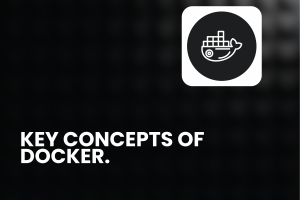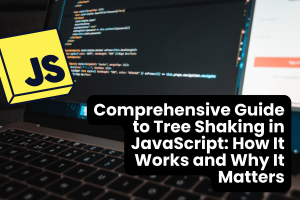
KEY CONCEPTS OF DOCKER
Docker is a tool that packages applications and their dependencies into a standardised unit called a container Key Concepts 1. Docker Container A container is a self-contained, executable software package that includes everything needed to run an application, such as code, libraries, and dependencies. Containers are isolated, self-contained environments that run on a single operating system kernel. Think of it like a shipping container for software: it holds everything an application needs to run, no matter where it’s being shipped (or deployed). A container is an instance of a Docker image. A container is a running instance of a Docker image. When you run an image, Docker creates a container, which is a lightweight, isolated environment. You can start, stop, move, or delete containers. Multiple containers can run on the same machine, each completely separate from the others. Docker containers are isolated, ensuring that containers can run on the same

Why Express.js Makes Node.js Development Easier
When it comes to modern web development, Node.js has become one of the most popular platforms for building fast and scalable applications. It allows developers to use JavaScript on the server side, eliminating the need to switch between languages when working on both frontend and backend. However, working with raw Node.js can sometimes be tedious. Developers often find themselves writing repetitive code for routing, handling requests, and managing middleware. That’s where Express.js, the most widely used Node.js framework, comes in.What is Express.js?Express.js is a lightweight, flexible framework built on top of Node.js. It provides a simple way to handle web requests, define routes, and integrate middleware. In short,Express makes building APIs and web applications faster, cleaner, and far more efficient. If you’ve ever asked yourself ‘why use Express with Node.js?’, the answer is simple: it saves time, reduces complexity, and gives your code structure without sacrificing flexibility.How Express.js Makes Development

5 Red Flags in APIs That Attackers Instantly Notice
APIs are the most exposed layer of modern applications—and often the least protected.In many breaches, the same weaknesses appear repeatedly: overlooked configurations, excessive privileges, and misplaced trust in “internal” boundaries.The following five red flags represent common API flaws that attackers quickly identify and exploit. 1. Over-Permissive Tokens Description: Access tokens that grant excessive privileges across roles, scopes, or services. Risk:A single leaked token can expose sensitive endpoints, including administrative or internal APIs.Tokens frequently leak through logs, SDKs, session storage, or third-party integrations. Mitigation:Apply least-privilege principles.Limit scopes and reduce token lifetime (especially for JWTs).Rotate tokens and monitor scope usage.Enforce access control on the server side. 2. No Rate Limiting or Abuse Protection Description: APIs that allow unlimited requests without throttling, filtering, or anomaly detection. Risk:Enables brute-force, credential stuffing, and account enumeration attacks.Creates performance issues for legitimate users. Mitigation:Implement global and per-user rate limits.Use CAPTCHA or step-up authentication for suspicious activity.Apply velocity

Frontend vs Backend Development: Understanding the Difference
In web development, frontend and backend are terms you’ll hear often. While they work together to create functional websites and apps, they focus on very different aspects of the development process. Understanding the difference can guide aspiring developers and businesses in making the right decisions. What is Frontend Development? The frontend is everything users interact with directly. Often called the “client-side”, it handles the visual and interactive elements of a website or app. Key Points About Frontend Development: Focus: Visuals, Layout, and User Experience Frontend developers create interfaces that are visually appealing and easy to navigate. This includes colors, fonts, buttons, menus, and page layouts to ensure a smooth experience for users. Technologies Used: HTML: Provides the structure of a webpage (headings, paragraphs, images). CSS: Styles the webpage by controlling colors, spacing, and layouts. JavaScript: Adds interactivity, like pop-ups, sliders, and animations. Frameworks & Libraries: Tools like React, Angular, Vue.js,

Comprehensive Guide to Tree Shaking in JavaScript: How It Works and Why It Matters
In modern web development, making your applications fast and lightweight is more important than ever. One way to achieve this is through a technique called Tree Shaking, which helps remove unnecessary code and shrink your JavaScript bundles. If you’ve used tools like Webpack or Rollup, you’ve probably come across the term. But what does it really mean, and how does it work? In this guide, we’ll break down tree shaking in simple terms—why it’s important, how it works, and how you can use it in your projects. Whether you’re just starting out or have experience building apps, this article will make the concept easy to understand and apply. What is Tree Shaking? Tree shaking is a technique used to remove code that isn’t being used (also known as dead code) from your JavaScript bundles during the build process. The name comes from the idea of “shaking a tree” to drop

Progressive Web Apps (PWA): The Future of Web Development
In today’s fast-paced digital world, users expect speed, reliability, and an app-like experience no matter their device or internet connection. That’s where Progressive Web Apps (PWAs) come in. They bridge the gap between web and mobile apps, providing the best of both worlds. But what exactly is a PWA, and why should developers care? What is a Progressive Web App (PWA)?A Progressive Web App is a type of application software delivered through the web, built using standard web technologies like HTML, CSS, and JavaScript, but with the feel and functionality of a native app. PWAs work on any platform that uses a standards compliant browser, including both desktop and mobile devices. Core Characteristics of PWAs Key Technologies Behind PWAs Service Workers: JavaScript files that run in the background to enable offline support, push notifications, and caching. Web App Manifest: A JSON file that defines the app’s name, icons, theme color,
